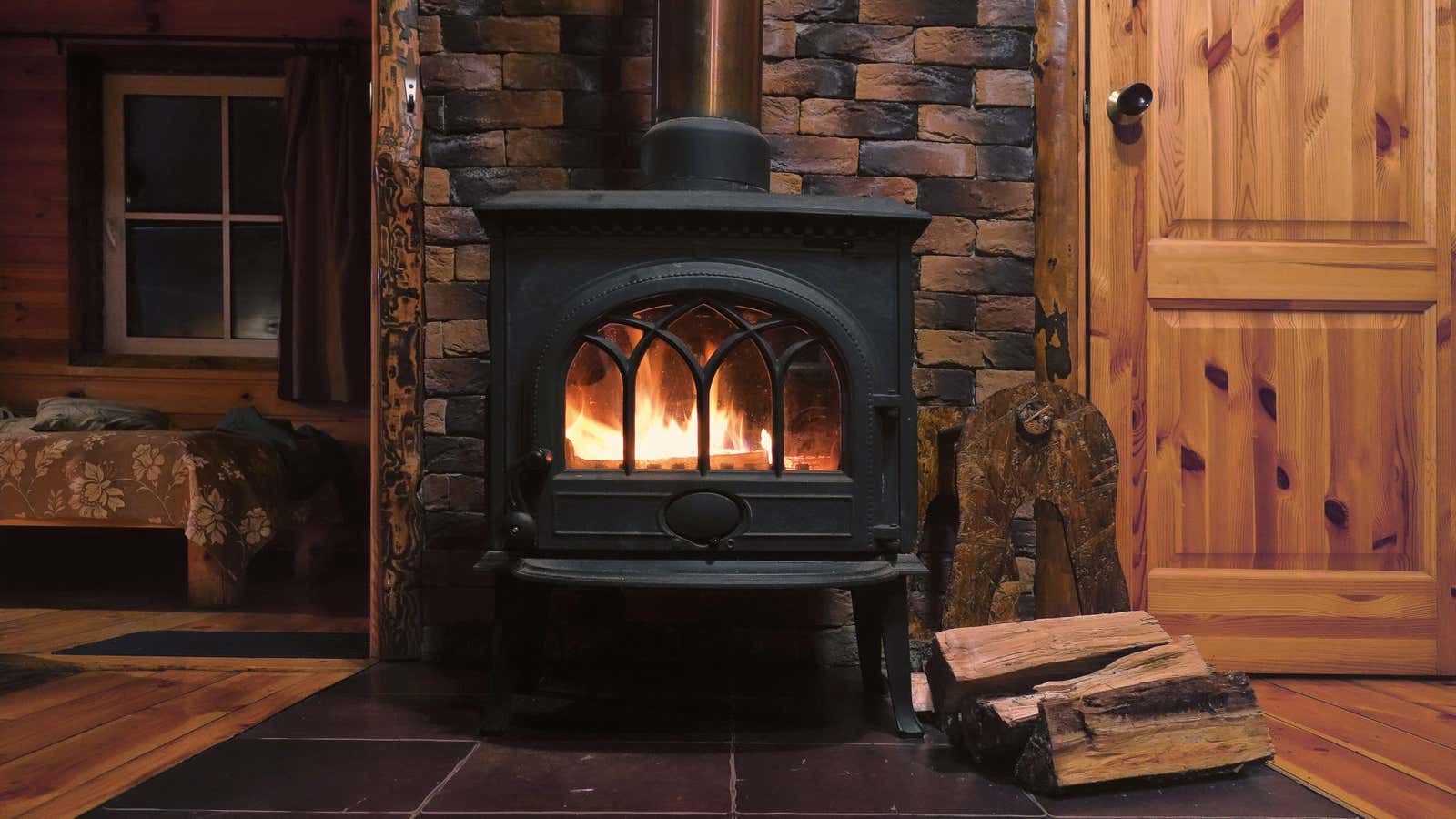Your Fireplace Should Not Dry Out the Air

In cold weather, especially when the days are getting shorter, lighting an indoor fire can be a cozy escape from the elements. If you have a wood-burning stove, you can use it as a primary or secondary heat source, so keeping the fire going is not only nice, it’s essential. But all that dry heat from a campfire can dry out the air around you. And preventing the air from drying out isn’t just a matter of comfort, it can also affect your health. According to the National Institutes of Health , the most healthy humidity level is between 40 and 60%. Luckily, there are some easy ways to manage the humidity in your home and keep the air healthy no matter what the weather.
Invest in a hygrometer
If you’re looking for optimal humidity, a hygrometer can help you control the humidity in your room. While some HVAC systems have built-in hygrometer displays, not all units will have one. If your device has a hygrometer component, it may also have built-in humidifier/dehumidifier functions. If so, then adding steam to the mix really has more to do with comfort than health. However, if you’re using a fireplace or wood stove as your regular heat source, chances are your home doesn’t have built-in controls, so using a hygrometer to measure indoor humidity is key.
Use a steamer
A steam boiler can be used to add moisture to the air on a wood stove. They come in a variety of styles, from traditional teapot shapes to dragons , chickens , and bears (oh my). Mount one on top of a wood stove and use the heat from the stove to vaporize water into the air. There are also steam cooking pots that can be used to diffuse the aroma into the air by adding herbs, citrus or essential oil to the steam pot. If you have a fireplace, it’s okay to keep a steam kettle or pot on a regular stove while you use the fireplace. Just make sure that the pot does not dry out and does not overheat.
Use Your Instant Pot
You can also use the Instant Pot as a steam production tool. Set your block to high and wait until it builds up pressure. Once this is done, turn the setting to “warm” and open the steam valve. You can also remove the lid to let more steam into the room. If you have a fireplace, this may be a safer way to create steam than a pot on the stove because there is less chance of an accident if left unattended. Using this method of steam production, you can also add aromatic herbs to the pot for a pleasant aroma.
Use a traditional humidifier
If you prefer the more traditional route, a standard humidifier is fine. This is especially useful if you don’t have a humidifier built into your HVAC. The National Institutes of Health recommends using an evaporative or steam humidifier because cool mist models can spread allergens into the air. A humidifier also often has settings such as a timer and humidity settings that will let you automate the device, so if you want to set it up and forget it, a humidifier is your best bet.